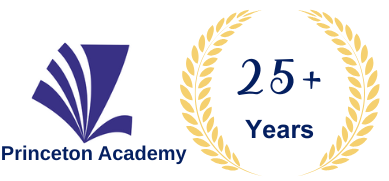Introduction
- Tailor your presentation to your audience
- Learn how to project your voice and use pauses to dramatize your point
- Expertly handle difficult questions and situations
- Confidently Deliver Your Presentations with Clarity and Conviction
- Apply the Elements Essential to Develop, Organize, and Deliver Effective Presentations
- Utilize Best Practices to Maximize Your Presentation Strengths
- Use Relaxation Techniques to Overcome Nervousness
Communication Essentials
- Communication the Mother Skill
- Feedback is crucial
- Cs of Communication
- Choosing the right option: Face to Face, Phone, Email
Proactive Communication Best Practices
- Trap of Assumptions
- Asking Question Questioning Techniques
- Listening with empathy
- Providing a Big Picture
Balancing Verbal and Nonverbal Messages
- Explain the Need to Balance Style and Substance
- Identify the Importance of Nonverbal (Visual and Vocal) Messages
- Receive Feedback on the Nonverbal Messages You Send
- Practice Nonverbal Impact Skills to Reduce Nervousness and Engage the Attention of Your Listeners
Developing and Organizing Presentation Content
- Set Presentation Parameters
- Create an Audience Profile
- Tap into What You Already Know
- Identify What You Need to Find Out
- Structure Your Information
- Demonstrate How to Condense the Speech Outline into Notes You Can Speak From
- Explain the Benefits of Rehearsing, Adhering to a Time Frame, and Speaking from Notes
- Demonstrate How to Reduce Stress and Speakers Anxiety
Using Visual Aids and Support Materials
- Describe the Purpose of Visual Aids and Support Materials
- Distinguish Among Visual Aids, Speakers Notes, and Audience Handouts
- Identify Tips for Effective Composition of Visual Content
- Describe the Criteria for Selection Among the Many Types of Visual Aid Media
- Demonstrate Guidelines for Interacting with Visual Aids and Managing Handouts
Creating Engagement Verbal Impact and Interactivity
- Create Engagement with Audiences and Increase Their Participation
- Use Sensory-Based Language, Stories, and Analogies to Enhance Your Verbal Impact
- Interact with Your Audience Using Both Verbal and Nonverbal Techniques
- Present with Others in an Organized and Supportive Manner
The Presentation Environment
- Explain the Importance of the Question-and-Answer Session
- Demonstrate How to Respond Professionally to Questions from the Audience
- Anticipate, Avoid, and Handle Equipment Problems
- Identify What Logistical Arrangements to Check
COURSE SCHEDULE & FEES
DOWNLOAD COURSE CONTENTS
Please click the button below to download the course content. You'll need to provide your contact information to receive the document.
INCOMPANY/GROUP TRAINING REQUEST
Why Choose Our Incompany Program?
- 🎯 Tailored content specific to your business goals
- 👥 Train entire teams together, saving time and cost
- 📍 Delivered at your location or virtually
- 📅 Flexible scheduling to suit your timelines
- 📈 Increase retention and application of skills
